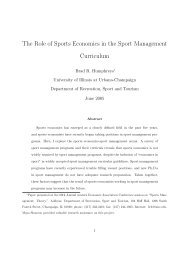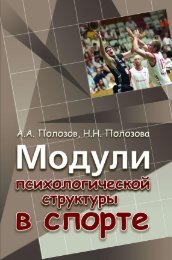Totally Tae Kwon Do Magazine - Issue 17 - Usadojo
Totally Tae Kwon Do Magazine - Issue 17 - Usadojo
Totally Tae Kwon Do Magazine - Issue 17 - Usadojo
You also want an ePaper? Increase the reach of your titles
YUMPU automatically turns print PDFs into web optimized ePapers that Google loves.
to how Choi Kwang <strong>Do</strong> teaches that the<br />
back knee should be bent. But actually the<br />
back kick in suspended punching breaks<br />
gives the answer: adoption by the ITF of<br />
sequential motion has an effect in the way<br />
techniques are compensated / cancelled.<br />
And the secret is that the way you train to<br />
cancel your techniques will influence your<br />
striking habits. Seasoned martial artists<br />
know that proper repetition is the key to<br />
mastery. Experience tells that most martial<br />
art students practice their forms going<br />
through the diagram at probably ¾ of their<br />
maximum power. Except when we put<br />
ourselves into “performance mode”<br />
because we are in<br />
a tournament, test,<br />
or simply there’s<br />
someone watching,<br />
repetition is done<br />
at a logically<br />
moderated effort.<br />
Under the<br />
traditional system,<br />
this means final<br />
acceleration of the<br />
attacking or<br />
defending tool is<br />
neglected during<br />
practice, because<br />
there is no special<br />
motion triggering it.<br />
On the other hand<br />
the ITF system,<br />
emphasizing an abrupt, jerky extension of<br />
the back foot (simultaneous to exhalation,<br />
hip & wrist rotation and lowering the center<br />
of gravity), compels the student to get used<br />
to routinely accelerating his striking tool,<br />
even in partially uncommitted practice of<br />
patterns. So the ITF style of training<br />
patterns ensures repetition of certain<br />
technical gestures that will result in very<br />
useful habits for powerful striking. As the<br />
student progresses, the importance of his<br />
center of gravity (the center from which<br />
opposing forces originate) and the control of<br />
the body axis becomes clearer and tangible.<br />
From the center, one force goes forward<br />
and the other, opposite. As I write this I<br />
remember Master Hee Il Cho’s iconic jump<br />
spinning back kick, with a fully extended<br />
reaction leg. In the context of modern ITF<br />
patterns, any piston motion that leads to<br />
sliding back is a big mistake, since the final<br />
position of the “back hip” should be slightly<br />
closer to the target than in the beginning.<br />
The piston motion helps to realize the<br />
importance of synchronizing the whole body<br />
while keeping it relaxed and vertical (that is<br />
very important: the head must not go back<br />
and forth), flexing the knees timely, and<br />
exhaling. When properly mastered, this<br />
motion can be reduced to a minimum, and<br />
allow a <strong>Tae</strong>kwon-<strong>Do</strong> expert to generate<br />
power without resourcing to pure mass. An<br />
advanced<br />
<strong>Tae</strong>kwon-<strong>Do</strong> black<br />
belt should be able<br />
to generate power<br />
in very short<br />
ranges and without<br />
using wide stances,<br />
even to the point of<br />
striking powerfully<br />
without a firm base<br />
–retreating from<br />
the target, in midair,<br />
on one foot, etc-.<br />
Instructor Leo Di Lecce performs a spinning jumping side<br />
kick. Note the reaction provided by the extension of his nonkicking<br />
leg, and how he controls his body position to ensure<br />
a strong impact.<br />
* * *<br />
Power does not<br />
substitute<br />
coordination. Both<br />
attributes need to be practiced, and they are<br />
both related to relaxation and fine body<br />
mechanics. Before fully turning to modern<br />
ITF-style training I was a proficient black<br />
belt, quite balanced in terms of power and<br />
coordination. A renewed, precise<br />
understanding of the practical physics of<br />
classical ITF <strong>Tae</strong>kwon-<strong>Do</strong> led me to modify<br />
my training with great results. I am aware<br />
that my interpretation of the sine wave is<br />
similar, but not exactly the same, as that<br />
proposed by the ITF major branches these<br />
days. In my case, there is still plenty of room<br />
for improvement. But I credit the sine wave<br />
for certain goals I have achieved. Knowing<br />
that I am able to deliver truly powerful<br />
strikes without much motion has made a<br />
<strong>Totally</strong> <strong>Tae</strong> <strong>Kwon</strong> <strong>Do</strong> - <strong>17</strong>

















